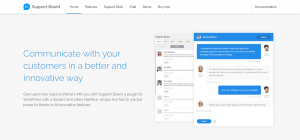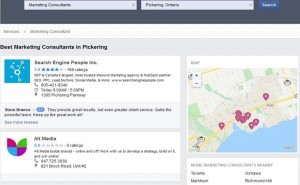The Rules Of Modern Attribution
by John Bates , May 9, 2017
There are a number of well-documented challenges with attribution in paid media. But as the digital marketing industry collectively works toward closing the loop, we must be careful not to succumb to tunnel vision: although paid media is critical in achieving reach and performance objectives, it is only one piece of the puzzle that is modern attribution.
In a customer-centric world, marketing value lies in accurately mapping the customer’s journey through the funnel and within the context of the various interactions with paid and owned media — and ultimately, understanding which of those interactions maximize returns.
Breaking down siloes is a daunting task — and measuring the combined results, even more so. But with the right strategy in place, marketers can glean valuable insights that provide a more complete view of their overall performance, augmenting paid efforts with learnings from owned-and-operated properties.
Here’s how it can be done:
1. Don’t Forget Your Own Data
One of the most common and complete data sources is owned media. Owned-media properties — social media channels or your brand’s Web site, for instance — give your brand a much greater level of control over the consumer’s experience than paid media offers. Since your brand isn’t paying for owned media, each owned property is a readily available source of data to collect, analyze, and optimize. However, many brands overlook incorporating these sources of rich data within the context of attribution.
Today’s technology offers you the tools necessary to analyze and establish attribution from every point along the path from leads to sales and even beyond. Remember, your data — be it user engagement metrics or conversion — should no longer be used solely to judge past performance. It should also be used to spur greater successes in the future. But if you can’t attribute your successes and defeats to their true sources, you won’t be able to build on those insights for greater success and ROI in this and future campaigns.
2. Measure a Customer’s Long-Term Value
Brands can become so focused on a sale, conversion, or specific channel that they miss out on maximizing the total profitability and value of a customer. The value of looking at customers’ decisions and interactions is that you gain a more holistic understanding of the long-term value of consumers’ brand experiences — well beyond just the last few clicks leading up to conversion.
Instead of thinking “this $0.50 ad produced a $20 sale,” you should be thinking “this $0.50 ad not only produced a $20 sale, but also resulted in the customer spending an additional $20 every other month.” Then dig deeper to ensure you have a complete understanding of the why behind these numbers. Are higher-value customers arriving at that ad via certain channels? Is the segment being targeted via this ad a higher-value segment?
Looking at the customer’s value as more than just a single sale allows you to account for the true ROI of your ad campaigns and place ad dollars behind the campaigns that will produce greatest long-term value for your brand. And the only way to accomplish this is with a sophisticated analytics strategy that includes measuring customer lifetime value.
3. Reassess Your Keyword Strategy
While you are in the process of determining the lifetime value of customers who respond to your ad campaigns, don’t forget to surface the true value of your keywords as well. First, test to see if the keywords you’re targeting are likely to perform well before throwing ad dollars behind them. You can do this most cost-effectively by first testing keywords in your owned media — for instance, in your email campaigns or internal Web site search — before throwing money behind them in your paid campaigns. Testing different combinations of keywords in the context of owned media helps brands to broaden their thinking and make better decisions before putting funding behind keywords in their paid campaigns.
Then be sure to understand the long-term value of keywords as they contribute to your paid media. Often, the thinking is “okay, this ad is for this search word. It’s performing the best, so let’s pump a bunch of money into that.” Instead, brands should be thinking “thi;search word is performing the best, but they’re just buying one item that’s on sale; whereas, with this search word, customers are buying a whole bunch of items and are more likely to return to buy more.” Just as when assessing your customer’s lifetime value, assessing the long-term impact of your keywords allows you to know where to allocate your ad dollars for greatest overall returns.
4. Overcoming the Mobile Attribution Hurdle
According to the 2016 U.S. Cross-Platform Future in Focus report, 65% of all digital media time spent by consumers is on mobile, with desktop becoming secondary as a touchpoint. At the same time, mobile conversion rates are 70% lower than on desktop. This means that lifetime customer values among mobile users and performance across all mobile channels often leave brands disappointed.
But with the high value that customers place on mobile and the ability it creates for advertisers to meet them where they are 24/7, it is all the more critical for marketers and advertisers to step up their game. Because consumers are encountering your brand through multiple screens, devices, and channels, it’s once again important to consider the entire customer journey.
Mobile attribution is a subset of the overall attribution-measurement strategy. It assesses the impact and value of both paid and owned mobile interactions to determine which help lead to conversions and which do not. With this information, brands can better understand what channels are performing on mobile, why they are performing well, and ultimately, what steps can be taken to boost underperforming mobile-channel results. Understanding mobile attribution gives brands important insights into where their marketing dollars should be spent for greatest returns. Brands formulating their mobile attribution strategy often begin with paid media, but that’s only one part of the overall digital marketing equation.
With many mobile users installing ad blockers on their devices, brands are forced to find new ways to engage with customers. As a result, both investing in the development of the brand’s mobile app experience and delivering contextually relevant and interesting content through it, become increasingly important to the overall marketing strategy. How effective is the owned mobile app experience in engaging customers and increasing overall ad influence?
An international hotel knew that travelers often begin their customer journeys on desktops as they plan their trips and search for best hotel deals, but once customers are on the road, the hotel app is its most important touchpoint with their customers. So they pulled from all customer data to make it personal and relevant with content that enhanced their customers’ trips, enabling customers to chat with hotel personnel, reserve parking, ask for room service and even request certain items before they arrive. Customers who have experienced this level of service and are searching for a hotel deal will in the future be more likely to click and convert when they see an ad for this hotel.
5. Tie It All Together
Going beyond paid is about looking at everything combined and making fully informed decisions to optimize every interaction — not just paid media — across the holistic consumer brand experience. Employ all this information to help you understand how the different channels are performing so you can make better decisions when it comes to your paid campaigns.
MediaPost.com: Search Marketing Daily
(70)
Report Post





